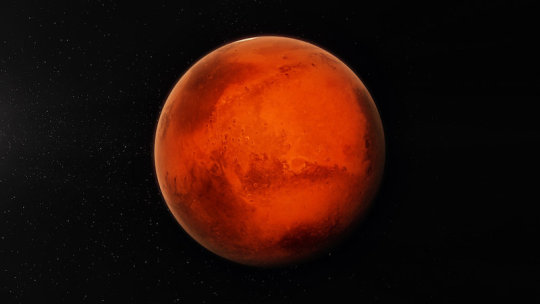NASA’s InSight lander detects stunning meteoroid impact on Mars
NASA’s InSight lander recorded a magnitude 4 marsquake last Dec. 24, but scientists learned only later the cause of that quake: a meteoroid strike estimated to be one of the biggest seen on Mars since NASA began exploring the cosmos. What’s more, the meteoroid excavated boulder-size chunks of ice buried closer to the Martian equator than ever found before — a discovery with implications for NASA’s future plans to send astronauts to the Red Planet.
美国宇航局的洞察号着陆器去年12月24日记录到一次4级的火星地震,但科学家后来才知道地震的原因:据估计,这是自美国宇航局开始探索宇宙以来在火星上看到的最大的流星撞击之一。更重要的是,这颗流星体在离火星赤道更近的地方挖出了卵石大小的冰块,这一发现对美国宇航局未来将宇航员送上火星的计划具有重要意义。
Scientists determined the quake resulted from a meteoroid impact when they looked at before-and-after images from NASA’s Mars Reconnaissance Orbiter (MRO) and spotted a new, yawning crater. Offering a rare opportunity to see how a large impact shook the ground on Mars, the event and its effects are detailed in two papers published Thursday, Oct. 27, in the journal Science.
科学家们观察了美国宇航局火星勘测轨道飞行器(MRO)拍摄的前后图像,发现了一个新的、张开的陨石坑,确定这次地震是由流星撞击造成的。10月27日周四发表在《科学》杂志上的两篇论文详细描述了这一事件及其影响,为我们提供了一个难得的机会,让我们看到一次大撞击是如何震动火星地面的。
The meteoroid is estimated to have spanned 16 to 39 feet (5 to 12 meters) — small enough that it would have burned up in Earth’s atmosphere, but not in Mars’ thin atmosphere, which is just 1% as dense as our planet’s. The impact, in a region called Amazonis Planitia, blasted a crater roughly 492 feet (150 meters) across and 70 feet (21 meters) deep. Some of the ejecta thrown by the impact flew as far as 23 miles (37 kilometers) away.
据估计,这颗流星的跨度为16到39英尺(5到12米)——小到足以在地球大气层中燃烧,但在火星稀薄的大气层中却不会燃烧,火星的大气层密度只有地球的1%。撞击发生在亚马逊平原地区,形成了一个直径约492英尺(150米)、深约70英尺(21米)的陨石坑。撞击产生的一些抛射物飞到了23英里(37公里)外。
With images and seismic data documenting the event, this is believed to be one of the largest craters ever witnessed forming any place in the solar system. Many larger craters exist on the Red Planet, but they are significantly older and predate any Mars mission.
有了图像和地震数据记录了这一事件,这被认为是太阳系中所见过的最大的陨石坑之一。火星上有许多更大的陨石坑,但它们的历史要比任何火星任务都要久远得多。
“It’s unprecedented to find a fresh impact of this size,” said Ingrid Daubar of Brown University, who leads InSight’s Impact Science Working Group. “It’s an exciting moment in geologic history, and we got to witness it.”
“发现如此规模的新撞击是前所未有的,”布朗大学的英格丽德·道巴尔说,她是洞察号撞击科学工作组的负责人。“这是地质历史上令人兴奋的时刻,我们将见证它。”
InSight has seen its power drastically decline in recent months due to dust settling on its solar panels. The spacecraft now is expected to shut down within the next six weeks, bringing the mission’s science to an end.
最近几个月,由于太阳能电池板上的灰尘沉降,洞察号的功率急剧下降。现在,该航天器预计将在未来六周内关闭,从而结束这项科学任务。
InSight is studying the planet’s crust, mantle, and core. Seismic waves are key to the mission and have revealed the size, depth, and composition of Mars’ inner layers. Since landing in November 2018, InSight has detected 1,318 marsquakes, including several caused by smaller meteoroid impacts.
洞察号正在研究这颗行星的地壳、地幔和地核。地震波是这项任务的关键,它揭示了火星内层的大小、深度和组成。自2018年11月登陆以来,洞察号已经探测到1318次火星震,包括几次由较小的流星撞击引起的地震。
But the quake resulting from last December’s impact was the first observed to have surface waves — a kind of seismic wave that ripples along the top of a planet’s crust. The second of the two Science papers related to the big impact describes how scientists use these waves to study the structure of Mars’ crust.
但去年12月撞击产生的地震是第一次观测到有表面波的地震,表面波是一种沿着行星地壳顶部波动的地震波。《科学》杂志发表的两篇与大撞击有关的论文中的第二篇描述了科学家如何利用这些波来研究火星地壳的结构。
Crater Hunters
火山口的猎人
In late 2021, InSight scientists reported to the rest of the team they had detected a major marsquake on Dec. 24. The crater was first spotted on Feb. 11, 2022, by scientists working at Malin Space Science Systems (MSSS), which built and operates two cameras aboard MRO. The Context Camera (CTX) provides black-and-white, medium-resolution images, while the Mars Color Imager (MARCI) produces daily maps of the entire planet, allowing scientists to track large-scale weather changes like the recent regional dust storm that further diminished InSight’s solar power.
2021年底,洞察号的科学家向团队的其他成员报告说,他们在12月24日探测到一场大地震。该陨石坑于2022年2月11日首次被马林空间科学系统(MSSS)的科学家发现,该系统在MRO上建造并操作了两台相机。背景相机(CTX)提供黑白、中分辨率的图像,而火星彩色成像仪(MARCI)每天生成整个星球的地图,使科学家能够跟踪大规模的天气变化,比如最近的区域性沙尘暴,进一步削弱了洞察号的太阳能。
The impact’s blast zone was visible in MARCI data that allowed the team to pin down a 24-hour period within which the impact occurred. These observations correlated with the seismic epicenter, conclusively demonstrating that a meteoroid impact caused the large Dec. 24 marsquake.
在MARCI数据中可以看到撞击的爆炸区域,这让研究小组确定了撞击发生的24小时内。这些观测结果与地震震中相关联,最终证明是流星体撞击导致了12月24日的大地震。
“The image of the impact was unlike any I had seen before, with the massive crater, the exposed ice, and the dramatic blast zone preserved in the Martian dust,” said Liliya Posiolova, who leads the Orbital Science and Operations Group at MSSS. “I couldn’t help but imagine what it must have been like to witness the impact, the atmospheric blast, and debris ejected miles downrange.”
MSSS轨道科学和操作小组负责人莉莉娅·波洛洛娃说:“这次撞击的图像与我以前见过的任何照片都不同,有巨大的陨石坑、裸露的冰,以及火星尘埃中保存的戏剧性爆炸区。”“我不禁想象,目睹那次撞击、大气爆炸和碎片向远处抛射的情景是什么样子。”
Establishing the rate at which craters appear on Mars is critical for refining the planet’s geologic timeline. On older surfaces, such as those of Mars and our Moon, there are more craters than on Earth; on our planet, the processes of erosion and plate tectonics erase older features from the surface.
确定火星上陨石坑出现的速度对于完善火星的地质时间线至关重要。在更古老的表面上,比如火星和月球上,陨石坑比地球上多;在我们的星球上,侵蚀和板块构造的过程从表面抹去了古老的特征。
New craters also expose materials below the surface. In this case, large chunks of ice scattered by the impact were viewed by MRO’s High-Resolution Imaging Science Experiment (HiRISE) color camera.
新的陨石坑也暴露了地表以下的物质。在这种情况下,MRO的高分辨率成像科学实验(HiRISE)彩色相机观测到了撞击散落的大块冰。
Subsurface ice will be a vital resource for astronauts, who could use it for a variety of needs, including drinking water, agriculture, and rocket propellant. Buried ice has never been spotted this close to the Martian equator, which, as the warmest part of Mars, is an appealing location for astronauts.
对宇航员来说,地下冰将是一种至关重要的资源,他们可以将其用于各种需求,包括饮用水、农业和火箭推进剂。从未有人在离火星赤道这么近的地方发现过埋藏的冰,而火星赤道是火星上最温暖的部分,对宇航员来说是一个很有吸引力的地方。
Read more at Phys.org
在Phys.org阅读更多











